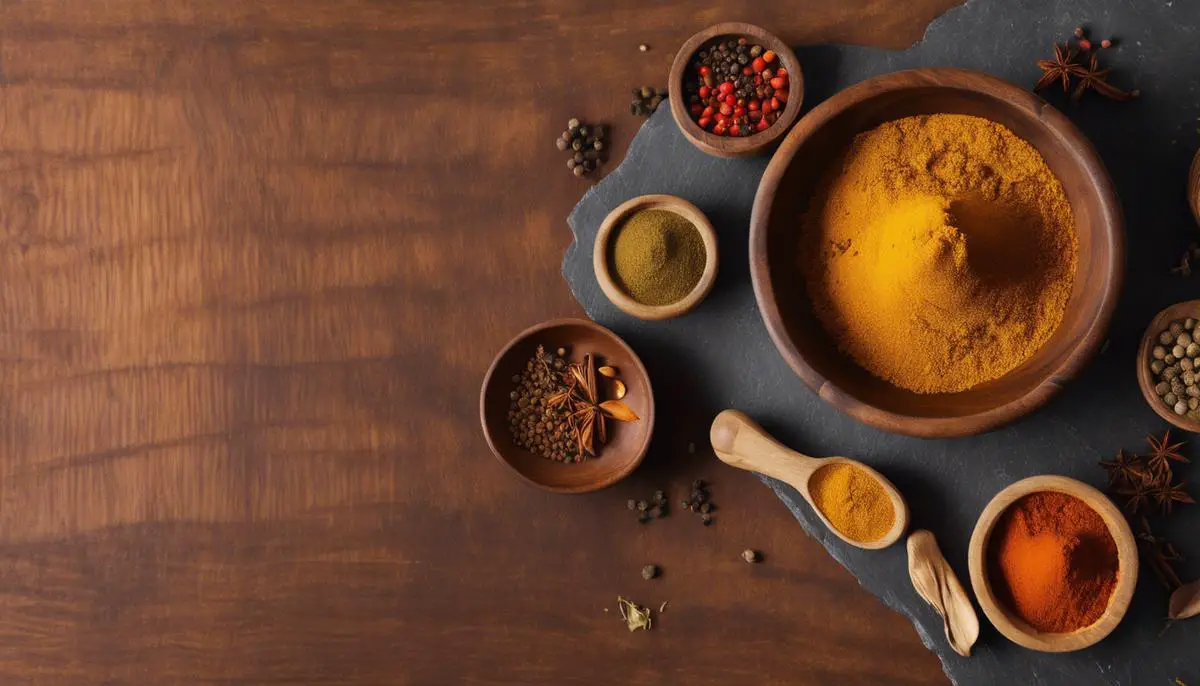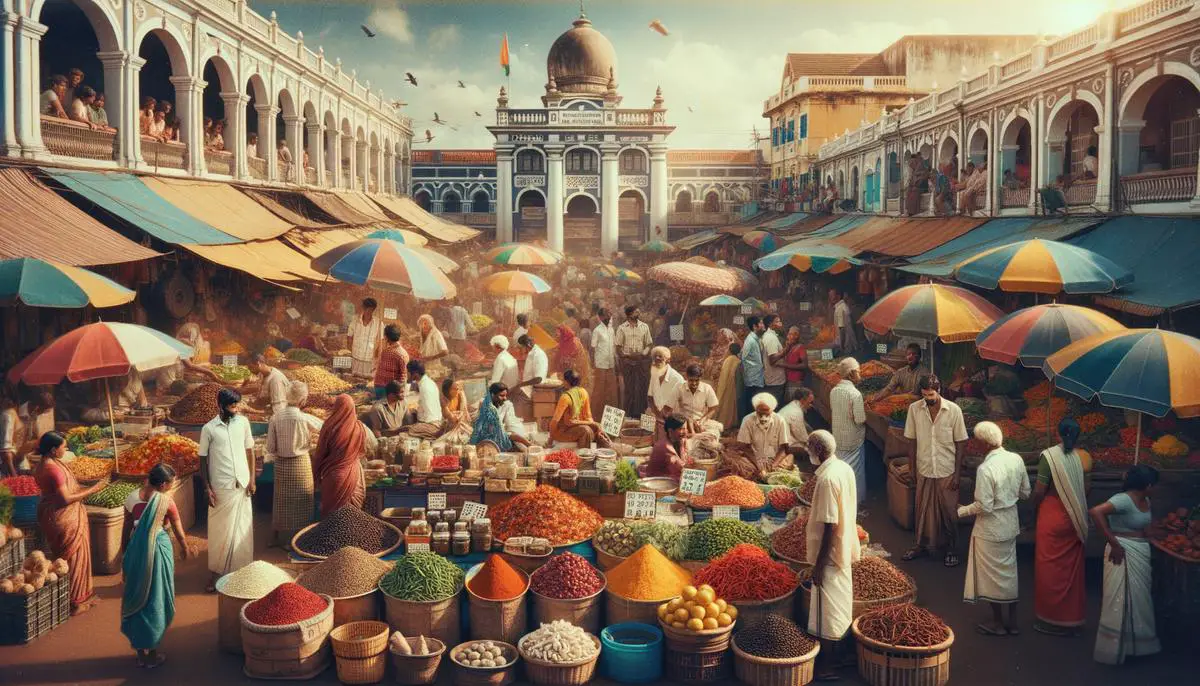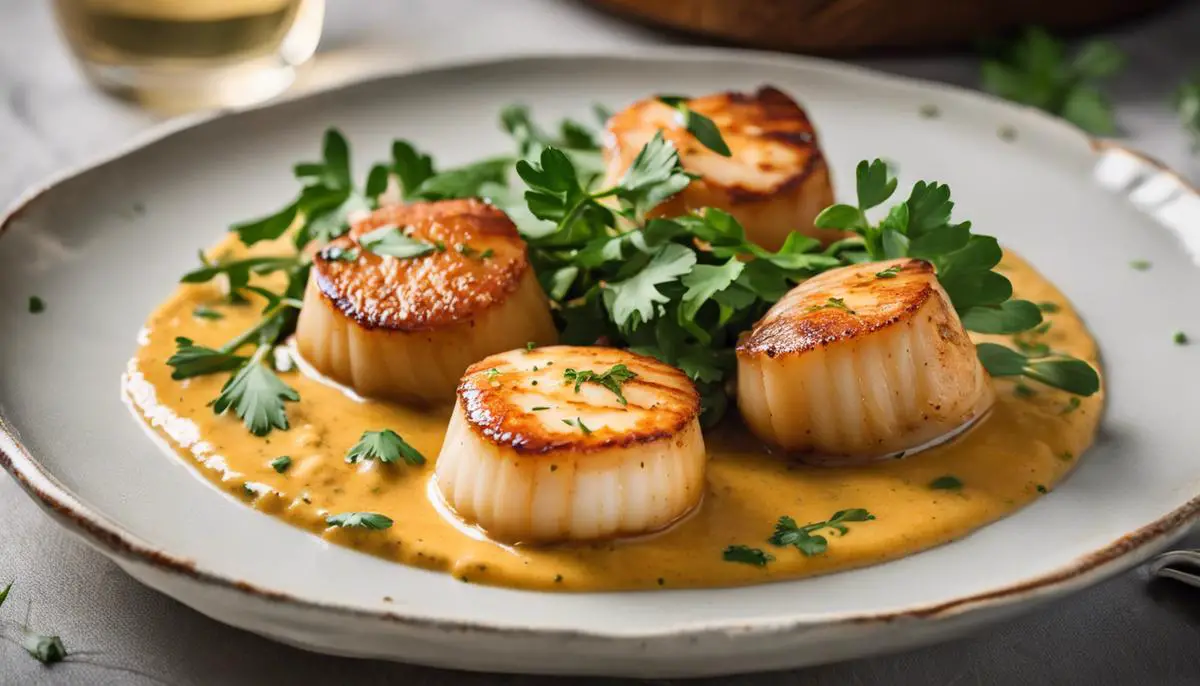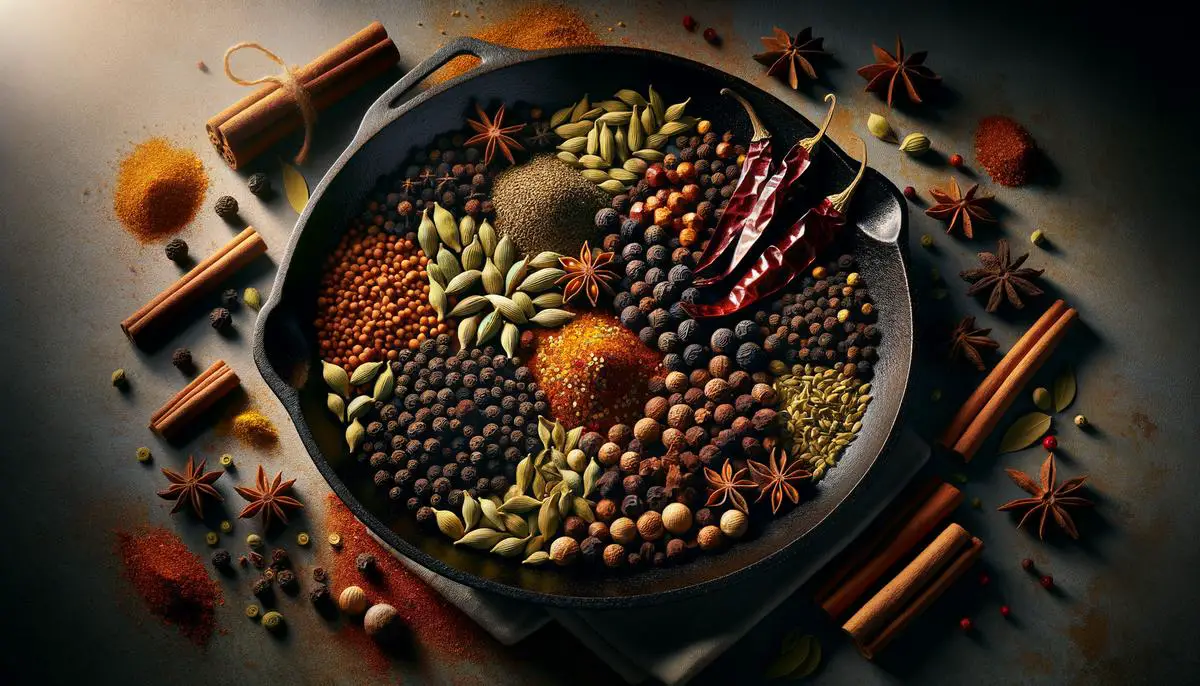
Origins & Evolution
Vadouvan curry's story begins in the colorful markets and kitchens of India, where masala blends were daily staples, infusing meals with their rich, complex flavors. Each family had their own version of masala, passing down recipes through generations. These blends were more than just spices; they were a history of the Indian palate.
The twist in the tale came with French colonial rule in India, specifically in the southeastern city of Puducherry, once known as Pondicherry. Here, traditional Indian masalas met French culinary techniques, resulting in a fusion that would become vadouvan. French chefs, fascinated by local spices, began to add their own twists, incorporating shallots, garlic, and other European aromatics.
This Indo-French masala didn't stay confined to Puducherry. It traveled back to France, where it was embraced and further adapted. French cooks appreciated its mellow spice profile and used it to season everything from roasted meats to creamy sauces, presenting a less fiery alternative to traditional Indian curries.
In contemporary times, vadouvan has seen a resurgence, celebrated by chefs and food lovers seeking to explore its nuanced flavors. Its appeal lies in its versatility and its ability to bridge two rich culinary traditions. While authentic to Indian spice blends' roots, vadouvan also tells a story of adaptation and fusion, marking a spot for itself in the heart of French cuisine.
The spices in vadouvan, such as cardamom, cumin, and fenugreek, are roasted before blending, infusing the mixture with a deep, caramelized warmth not found in raw spice blends. This process reflects the blend's dual heritage – the Indian tradition of celebrating spices' inherent virtues and the French methodology that emphasizes technique to elevate flavor.
As vadouvan continues to make its mark in global cuisine, its story is a testament to how culinary traditions can intertwine, creating something new and cherished. While the world may categorize it as a French or Indian blend, vadouvan exists in a class of its own, symbolic of the dance between cultures brought together by a shared love for transformative flavors.

Culinary Uses
Vadouvan curry's ability to infuse a broad spectrum of dishes with its delicate yet profound essence is a testament to its culinary ingenuity. It's a versatile marvel that navigates through the diverse terrains of global cuisine. From the warm kitchens of home cooks to the experimental labs of world-renowned chefs, vadouvan imparts its unique blend of soft, smoky, and savory notes, transforming ordinary recipes into extraordinary experiences.
In traditional dishes, vadouvan is used to season tender pieces of chicken or lamb stewed gently to perfect succulence, inviting the spices to meld with the meat's natural flavors. But contemporarily, vadouvan ventures far beyond, bringing its multisensorial delight to unexpected plates. It's the soft whisper of intrigue in a pot of lentil soup, a bold declaration of flavors in a risotto, or a subtle nod to complexity in roasted vegetable medleys.
Creative chefs have embarked on culinary experiments that see vadouvan starring in roles once unimaginable. Consider these innovative applications:
- Vadouvan-spiked aiolis offer new depth to burgers and sandwiches or can be whipped into butter melting over steamed asparagus or grilled corn.
- The humble popover or scone can be reimagined with a dose of vadouvan, where each bite becomes a flavor expedition.
- Cauliflower florets or chicken wings, roasted or fried to crispy perfection, find a new identity when tossed in vadouvan seasoning.
- Even popcorn is elevated from its humble abode to gourmet heights with just a sprinkle of this fragrant blend.
Seafood embraces vadouvan's spirit, perhaps more than any other protein. The mellow spice blend complements the delicate nature of fish, scallops, and shrimp, enrobing them in a coat of subtle warmth without overpowering their sweetness. Whether it's dressing up a simple pan-seared salmon or acting as a key player in a luxurious seafood bisque, vadouvan's versatility shines bright.
In a seamless marriage of cultures, vadouvan whispers tales of far-flung locales, bridging the gap between traditional and innovative cuisine. It invites curiosity into the kitchen, urging cooks to play, experiment, and explore the boundless possibilities its complex flavor profile offers. The culinary landscape is richer with vadouvan in its pantry, serving not merely as a spice blend but as an ambassador of cultural unity and culinary innovation.

Flavor Profile & Ingredients
Garlic's pungency, shallots' sweetness, and the earthy gravity of turmeric come together in vadouvan to orchestrate a symphony of flavors that captivate the palate with each aromatic whiff. Fenugreek lends its distinctive maple-like sweetness, standing as a testament to vadouvan's capacity to surprise and delight. These primary notes are complemented by a cast of spices that further enrich the blend's profile:
- Cumin seeds offer their warm and earthy tones
- Green cardamom imparts a sweet, almost eucalyptus-like coolness
- Mustard seeds pop in, bringing a tangy heat that zips through the deeper flavors, awakening the senses
- Chili peppers provide a measured heat that invites rather than overpowers
- Black pepper contributes a peppery depth that asserts itself, connecting all the flavors with its resonant piquancy
- Curry leaves add a distinctly citrusy and herby flavor, encapsulating the soul of Indian spices with a touch of vivacity
But what truly sets vadouvan apart is not just its ingredients; it's the meticulous process through which they're united. Each spice within vadouvan is carefully toasted, a technique that not only coaxes out their essential oils but also deepens their flavors, lending a roasted, almost nutty quality to the blend. This toasting ritual harmonizes the spices, marrying their individual qualities into a more compelling whole. It magnifies the garlic's allium notes, enhances shallot's quiet strength, and transforms the naturally bitter turmeric into something mellower and more grounded.
The result of this careful preparation is a curry blend that offers warmth, depth, and an array of subtle undertones and textures. On tasting vadouvan, one embarks on a culinary voyage with roasted Arabic aromas at the outset, moving smoothly to a mildly spicy middle, and finally, settling into the mellow sweetness of caramelized onions and shallots. Every spoonful of vadouvan tells a story, a narrative rich with global influences yet distinctly its own.
Indeed, vadouvan is not a mere seasoning but an invitation to culinary adventure—an opportunity for cooks everywhere to infuse their dishes with the legacy of French-Indian fusion cuisine. Whether it's animating a pot of lentil stew or adding depth to roasted meats, vadouvan ensures that a dish is not simply cooked but rigorously explored and vibrantly brought to life. Through vadouvan, kitchens everywhere hum with the whispers of Puducherry's past and the vibrant buzz of contemporary culinary innovation, making every meal an occasion to traverse borders and times.

In essence, vadouvan stands as a symbol of culinary harmony, bridging distant cultures through the universal language of flavor. Its story is not just about the spices and techniques that define it but about the connections it fosters between those who share a meal. Vadouvan's rich tapestry of ingredients and its journey from Indian markets to French tables remind us that food is more than sustenance—it's an expression of history, culture, and the enduring bonds that food can create across continents.
- Iyer R. 660 Curries. New York, NY: Workman Publishing Company; 2016.
- Norman J. The Complete Book of Spices. London, UK: Dorling Kindersley; 1990.
- Donovan S. The Spice Companion: The Culinary, Cosmetic, and Medicinal Uses of Spices. New York, NY: Clarkson Potter; 2016.



